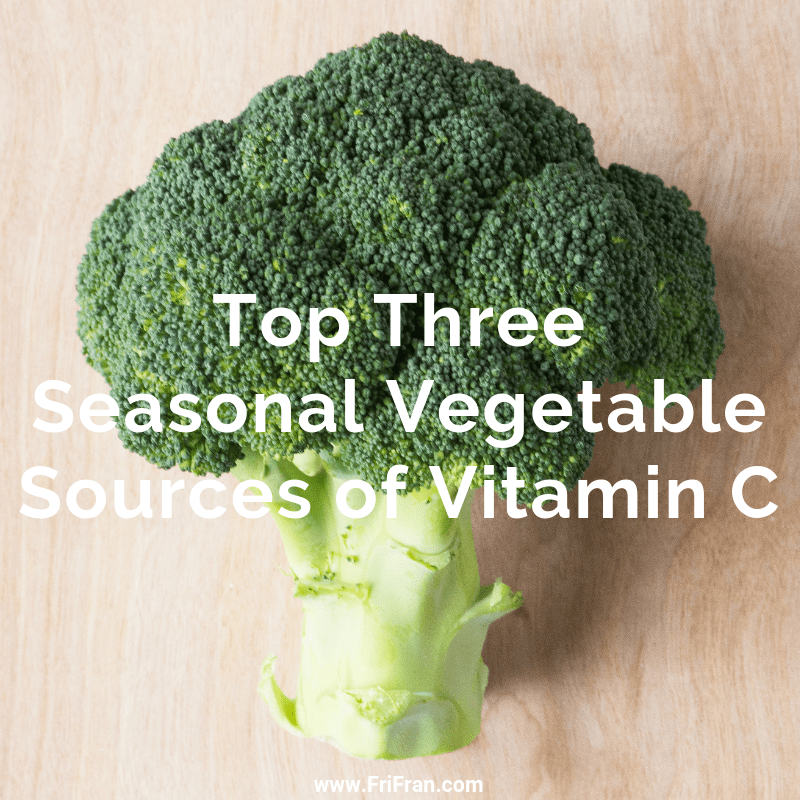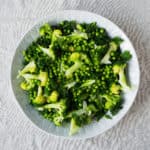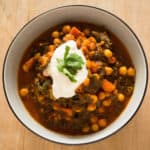
Vitamin C rich foods include peppers, dark leafy greens, kiwi fruit, broccoli, berries, oranges, tomatoes, green peas, and papayas. How do you ensure you get Seasonal Vegetable Sources Of Vitamin C in your diet?
It is January, I am in the UK and so Seasonal Vegetable Sources Of Vitamin C are a little limited… My January Seasonal Produce Roundup lists all available UK seasonal produce. But in terms of what to look for – apart from fruit (which are not so seasonal right now) we need to look out for leafy green veg – actually most veg is a reasonable source of vitamin C.
The current Recommended Daily Allowance (RDA) for vitamin C is 40 mg. Vitamin C is water soluble and cannot be store by the body so the RDA of 40 mg is required every day.
Why Is Vitamin C So Important???
Vitamin C (AKA ascorbic acid) is an essential nutrient required for the production of collagen which is essential for the development and maintenance of scar tissue (wound healing), skin, blood vessels, bones and cartilage. Vitamin C helps to protect cells and keeps them healthy. Vitamin C is also necessary for creating ATP, dopamine, peptide hormones, and tyrosine.
Lack of vitamin C can lead to scurvy. Scurvy is, unfortunately, not a condition of the past and although rare, is still with us.
Concerned You’re Not Getting Enough Vitamin C?
If you’re concerned you’re not getting enough vitamin C in your gluten-free, vegan life you could keep a food diary; logging everything you eat and drink. You can then work out exactly how much vitamin C you are getting on a daily, weekly and monthly basis. You should keep the diary for quite a few weeks for it to be representative of your intake.
I have a FREE Food Diary you can download. Just click the button below to sign-up and download.
Top Seasonal Vegetable Sources Of Vitamin C
The top three seasonal, January, sources of vitamin C are broccoli, kale and Brussels Sprouts with 80-120 mg vitamin C per 100 grams (raw). That is over 200% of your RDA of vitamin C in 100 grams of leafy green vegetable goodness!
Cooking veg reduces the vitamin C content by around one third. Cooking veg less will retain more vitamin C (and veg tastes better!).
Cauliflower and potatoes are also a great source of vitamin C.
So lets get some leafy green goodness into the body this January.
Brocolli, Kale and Pea Salad
Two vitamin C rich vegetables is one gorgeous salad. Perfect! Broccoli, Kale and Pea Salad is so light and fresh and at the same time, substantial enough to be the foundation of a good meal. I adore it early in the year when broccoli and kale are in season and frozen peas work really well. The bright green colour is a much needed splash of green in the dark winter months!
Black Bean and Kale Enchiladas
Black Bean and Kale Enchiladas are a great January dish and a great use of vitamin C rich kale.
Chick Peas and Kale in Tamarind Tomato Sauce
Fancy a curry with a great vitamin C content? Yes> Chick Peas and Kale in Tamarind Tomato Sauce hits the spot.
What are Your Favourite Seasonal Vegetable Sources Of Vitamin C?
There are lots and lots and lots of Recipes with Seasonal Vegetable Sources Of Vitamin C out there – this is just a tiny selection of ideas. There are lots more…
What are your favourite recipes using Seasonal Vegetable Sources Of Vitamin C? Drop a comment below or ping me on social media! 🙂


